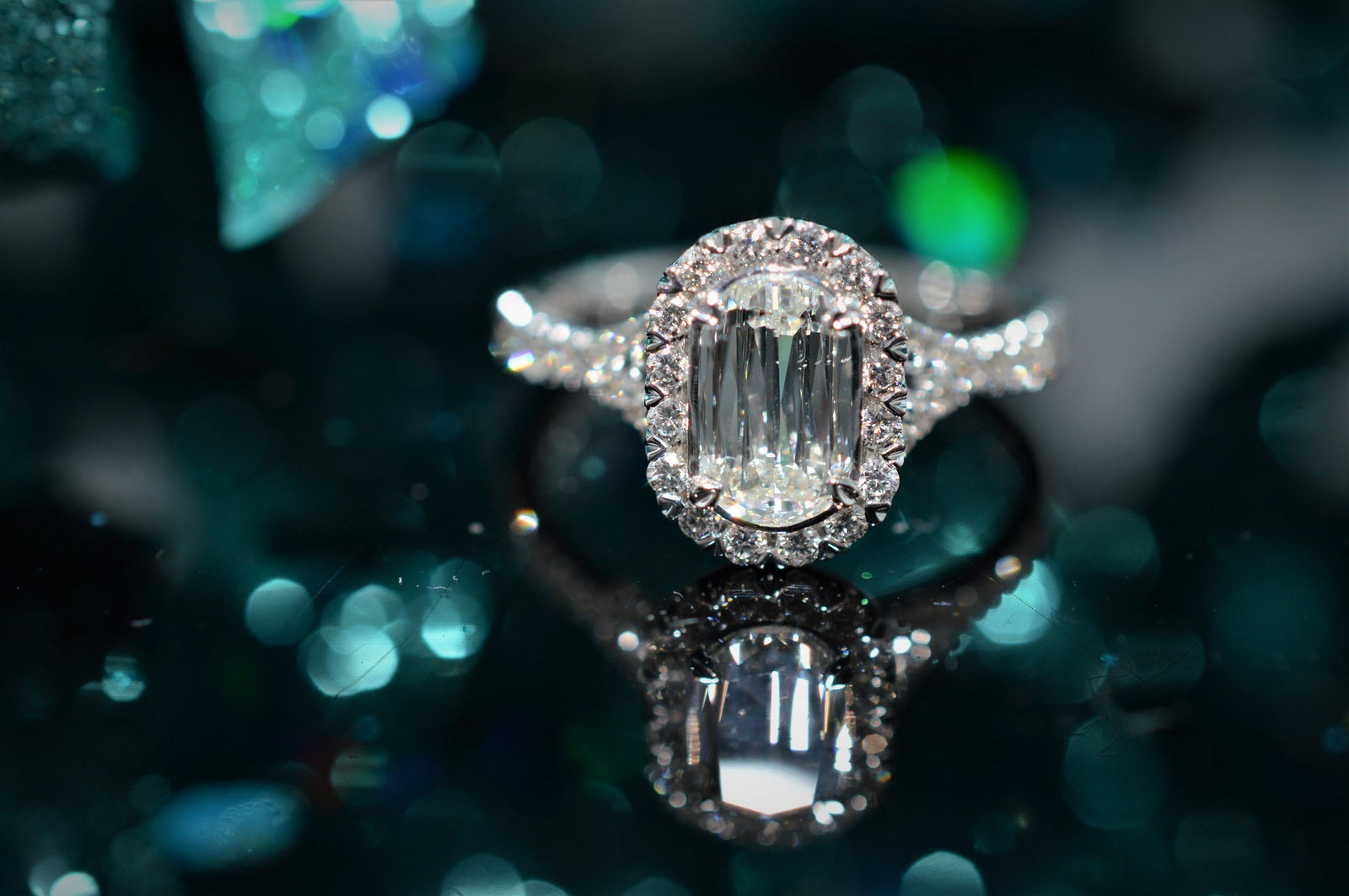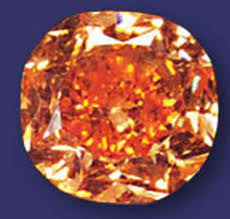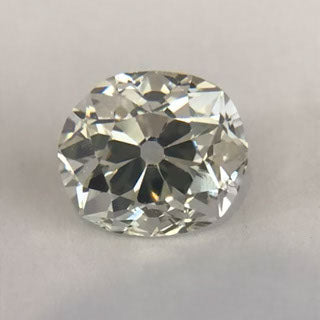Rare. Luminous. Scintillating. Dazzling. Who among us has not been mesmerized by the sight of a beautiful diamond or captivated by its natural history? Diamond crystals form deep within the Earth and are brought to the planet’s surface by long extinct, and equally rare, volcanoes. Upon close examination by a trained eye, these billion year old stones can be distinguished by their unusual luster (almost greasy like appearance). But to the untrained eye, rough diamonds appear unassuming, unremarkable, and indistinguishable from ordinary pebbles. It is only the faceting that brings these seemingly ordinary stones to life with an explosion of light and color. And it is the diamond cutter’s knowledge of optics, mineralogy, and geometry that allows for the transformation of these pebbles into faceted diamonds. However, it is the Master diamond cutter’s artistry, experience, and intuition that turns faceted diamonds into gemstones worthy of the ages.
Who is Christopher Slowenski?
One such Master diamond cutter is Christopher Slowenski who is the founder and chief designer at Christopher Designs as well as the creator of the Crisscut and L’Amour Crisscut diamonds. Christopher was born and raised in Poland where he was completing a degree in engineering, when in 1976 he immigrated to the United States. He settled in New York City and took a job in the diamond district where he met his future wife, Ewa. She recognized Christopher’s predilection for technical precision and encouraged him to pursue employment as a diamond setter. Christopher’s talent as a diamond setter and his willingness to tackle complicated jobs soon garnered him so much business that he and Ewa opened Christopher Designs in 1981.

Christopher would be presented with many difficult setting jobs that would require his artistic abilities as well as his engineering background. One such job involved replacing missing diamonds in a poorly made invisibly set diamond ring. To Christopher, this dilemma was a puzzle that required solving. He studied invisible setting techniques and then, using his engineering background, reimagined them. His newly reimagined way of invisibly setting diamonds, lead to Christopher’s first US patent in 1990. He also credits this experience as being the reason he is in business today.
How to Cut a Diamond
During this period, Christopher learned all he could regarding the New York diamond industry including the art of diamond cutting. Actually, the phrase “diamond cutting” is something of a misnomer. In order to facet a rough diamond, the stone is attached to a dopstick and is then gently held against a spinning wheel impregnated with diamond dust. Why diamond dust? Diamond is the hardest substance on Earth and only a diamond will scratch another diamond. By holding a rough diamond against such a spinning wheel a “window” is ground into the rough diamond. As more and more windows are created at very specific angles to one another, a faceted diamond begins to emerge.
The Crisscut Diamond
His skills as a diamond cutter were put to the test when Christopher was cutting a diamond baguette. A baguette is a rectangular shape diamond that has parallel rectangular facets. While at the diamond cutting wheel, he was momentarily distracted and accidently ground a triangular facet on the underside of the diamond. Fascinated by the effect of the triangular facet on the light emanating from rectangular shape diamond, Christopher decided to continue grinding triangular facets on the diamond. This fortuitous mistake marked the creation of the “Crisscut Diamond” for which he would obtain a patent in 1998. Unlike the 14 facets that typically occur on a baguette cut diamond or the 46 facets that grace a generic emerald cut diamond, the original Crisscut diamond possesses 77 crisscrossed facets that provide for greater scintillation, whiteness, and light performance
It is due to Christopher Slowenski’s curiosity, creativity, and skill as a Master diamond cutter that he created the Crisscut Diamond which improved upon the generic step cut diamond which has been around since the 1500’s. But instead of being satisfied with this remarkable achievement, Christopher wanted to find a way to enhance the size of a diamond. Why focus on size? Diamonds are sold by weight (carats) and like an iceberg most of the weight of a diamond cannot be seen. In fact, most of a polished diamond’s weight lies beneath it’s girdle (widest part of the diamond that determines shape and perceived size) which mimics the waterline on an iceberg.
The L'Amour Crisscut
In 2014, Christopher was presented with a thin piece of rough diamond and considered ways of cutting it in order to maximize the stone’s fire and brilliance. He built upon his success with the Crisscut diamond by adapting his new cut to thinner pieces of rough. He accomplished his task of eliminating much of the faceting (and weight) beneath the girdle by creating 2 aptly named “mirror” facets that would reflect towards the viewer’s eye, all the sparkle generated by the upper facets.
 We’ve all been to a carnival funhouse or hall of mirrors in which mirrors are placed at precise angles so that a person’s image is reflected off numerous mirrors simultaneously. Now, imagine walking into that same hall of mirrors while holding a spinning mirrored disco ball. The glitter and sparkle from that disco ball would be reflected off numerous mirrors creating an almost blinding explosion of light. This is precisely what Christopher Slowenski’s “mirror” facets accomplish.
We’ve all been to a carnival funhouse or hall of mirrors in which mirrors are placed at precise angles so that a person’s image is reflected off numerous mirrors simultaneously. Now, imagine walking into that same hall of mirrors while holding a spinning mirrored disco ball. The glitter and sparkle from that disco ball would be reflected off numerous mirrors creating an almost blinding explosion of light. This is precisely what Christopher Slowenski’s “mirror” facets accomplish.
However, this new “L’Amour Crisscut” does more than create a breathtakingly brilliant diamond. It creates a diamond with a broad silhouette that can appear up to 50% larger than a generic emerald cut diamond. This achievement, for which Christopher received yet another US patent, represents a true revolution in diamond cutting. For the first time, a natural diamond that appears large can be obtained at an affordable price. Indeed, it is for this very reason that the “L’Amour Crisscut” has a greater perceived value than any other designer branded diamond cut.
At last count, Christopher Slowenski holds more than 25 US and international patents on various inventions including his revolutionary “L’Amour Crisscut”. He is a diamond setter, Master diamond cutter, jewelry designer, and accomplished artist who has exhibited his oil on canvas paintings at Miami Art Basel. He is a true Renaissance man and we at Howard’s Diamond Center are proud to count Christopher among our friends. We are especially honored to present Christopher Slowenski’s “L’Amour Crisscut” diamond jewelry collection to the entire Ohio Valley.
Marking an extraordinary moment in one’s life requires an extraordinary diamond. Come see our “L’Amour Crisscut” diamond collection where every diamond is a work of art. “L’Amour Crisscut” – the new shape of love.





















